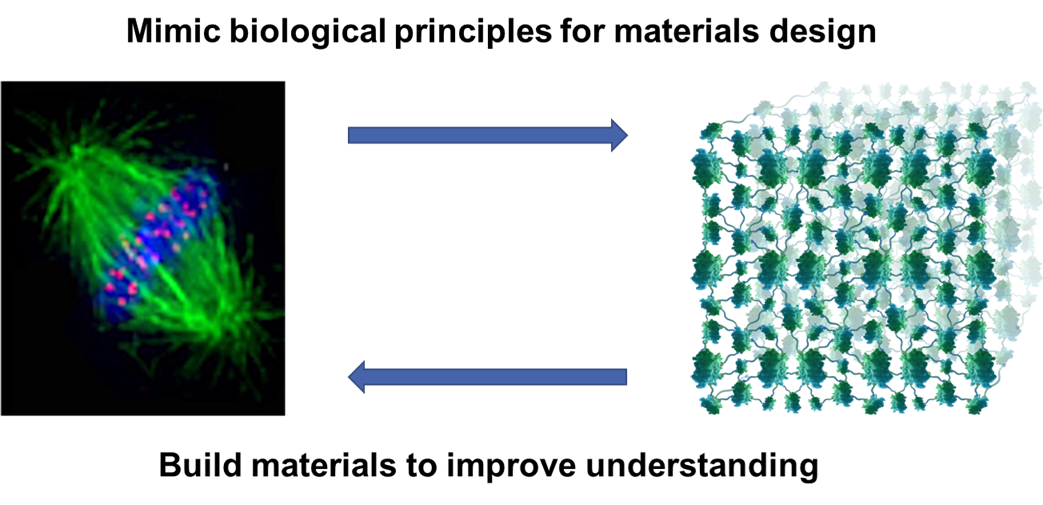Self-assembled, adaptive and biomimetic materials systems

Biological systems such as cells utilize responsive self-assemblies of DNA, RNA, proteins, and other macromolecules in various compositions to exploit effects such as compartmentalization, condensation, and phase separation that precisely control cellular processes. Here, new research on cellular condensation and compartmentalization (e.g., phase separation, RNA-modulated chromatin structure, etc.) has become possible through improved analytical methods such as high-resolution microscopy, next generation sequencing or proteome techniques. As a result, these effects can now be studied in great detail and, together with data-driven virtual materials and simulations, are leading to a better understanding of fundamental biological principles.
This understanding can in turn be used to improve self-assembling and adaptive synthetic material systems such as all-enzyme hydrogels, DNA hydrogels, DNA composites, polymer-based hydrogels, and MOFs, which are currently being investigated in various research groups at KIT. These systems can mimic the behavior of the biological systems mentioned above, such as compartmentalization and self-assembly. This is based on the optimized composition of these materials together with the ability to modulate their (bio)physical and (bio)chemical properties. These synthetic approaches in combination with data-driven virtual materials and simulations can mimic and exploit effects found in biological systems.
This combination of biological systems with materials science, data science, and simulations will be important for a number of research areas, for example:
I) Understanding the effects of packing density and compartmentalization in biological systems such as chromatin.
II) Exploiting the self-assembly mechanisms of biological systems for synthetic data storage.
III) Improving tissue engineering.
IV) Stabilization and immobilization of biocatalysts to enable continuous production processes.
V) Identification and cultivation of novel biocatalysts, such as cells or enzymes, for a more sustainable chemical industry.
The acquisition of high-quality, high-throughput, content-rich data coupled with thorough research data management will improve our understanding of biological systems and allow us to train algorithms to predict the optimal composite to mimic the performance of a biological system.
The activities in this Focus Field are part of the topic Natural & artificial biosystems.
| Name | Institute |
|---|---|
| Bastmeyer, Martin | Zoological Institute |
| Dominguez, Carmen M. | Institute of Functional Interfaces (IBG-1) |
| Erhardt, Sylvia | Zoological Institute |
| Hilbert, Lennart | Institute of Biological and Chemical Systems - Biological Information Processing (IBCS-BIP) |
| Niemeyer, Christof M. | Institute for Biological Interfaces (IBG-1) & Institute for Organic Chemistry (IOC) |
| Rabe, Kersten S. | Institute for Biological Interfaces (IBG-1) |
| Tsotsalas, Manuel | Institute of Functional Interfaces (IFG) |

